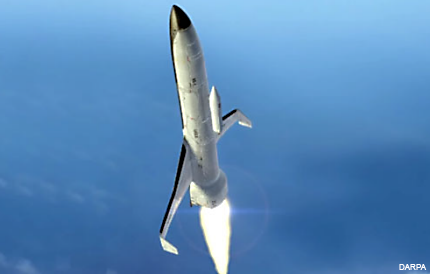Satellite-launching drone program enters next phase
DARPA awards Boeing $6.6 million to continue developing the reusable, hypersonic Experimental Spaceplane.

An illustration depicts DARPA’s concept for XS-1.
The Pentagon, which has been looking to reduce the costs of satellite launches, is moving ahead with one plan to develop a reusable, shuttle-like unmanned vehicle that can launch satellites into orbit and then return to Earth.
The Defense Advanced Research Projects Agency has awarded a contract modification worth $6.6 million to Boeing to continue work on the Experimental Spaceplane, or XS-1. Boeing will work on what DARPA calls Phase 1B of the project, which entails developing the demonstration concept and core technologies, and ultimately performing several demonstration tasks.
DARPA’s goal with the XS-1 program is to develop a fully reusable, hypersonic aircraft that can reach a suborbital altitude and launch small-payload satellites of 3,000 to 5,000 pounds into low-Earth orbit by using an expendable upper stage. The agency wants the XS-1 to be able to fly as often as 10 times in 10 days and be able to reach a speed in excess of Mach 10. And, critical to the program, it wants the launches to cost less than $5 million each.
The program is part of the Defense Department’s overall effort to try to reduce the costs of launching satellites, at a time when budgets are being cut while access to space has become more important. Another DARPA program, Airborne Launch Assist Space Access, or ALASA, is working with Boeing to develop a similar airborne system for launching smaller, 100-pound satellites.
Boeing was a part of one of three company teams chosen in 2014 to start on designs for the XS-1. Boeing teamed up the Blue Origin; the other teams were Northrop Grumman and Virgin Galactic, and Masten Space Systems and XCOR. With the award of Phase 1B, the total cumulative face value of the agreement increases from $10 million to $16.6 million, with Boeing shouldering $6 million of the costs and DARPA the rest. Work on this phase is expected to be completed by August 2016.
NEXT STORY: Navy, Marines order up more Blackjack UAS